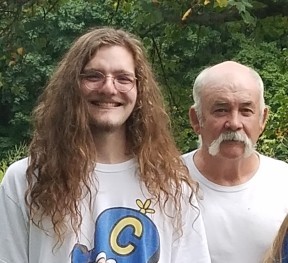A Veteran from the Greatest Generation
posted on
November 10, 2025
You’ve probably heard the phrase “The Greatest Generation.” It was coined by Tom Brokaw back in 1998 when he wrote a book with that title. The term refers to people born between 1901 and 1927 — a tough, resilient group who grew up during the Great Depression and went on to fight in World War II. The name recognizes their patriotism, strong work ethic, and the huge role they played in both winning the war and rebuilding the country afterward. This generation is often remembered for its ability to push through hard times and help create a better world once those challenges were over.
My grandfather, Logan Cooper, was born in 1926, and he fit all the characteristics of a member of the Greatest Generation. His family struggled to make ends meet during the Depression. By the time he was 18, he had dropped out of school and had already worked a variety of jobs. He was employed at Noblitt-Sparks in Columbus, Indiana, when he was drafted into World War II.
I remember him saying that after his military physical, he was asked what branch of the service he would prefer. Everyone in front of him had requested the Navy but ended up in the Army. He told them he had no preference and ended up in the Navy.

His experience in the Navy wasn’t something he liked to talk about. Only once during my childhood did he bring out his box of pictures and tell my sisters and me a few stories.
Recently, I requested his military records from the National Archives. They were pretty straightforward, listing where he had served, but without any interesting tidbits about him getting into trouble. His discharge papers did note, “Is not recommended for good conduct medal,” and we got a chuckle out of that. I’m guessing he played some pranks or had a grumpy attitude at times.
According to his records, he was sworn in at the Indianapolis Naval Recruiting Center on November 9, 1944. That same day, he was transferred to the U.S. Naval Training Center in Great Lakes, Illinois, for basic training.
After basic, he was sent to California. He passed through Camp Shoemaker before moving on to Treasure Island in San Francisco Bay. Treasure Island played an important role in WWII, serving as a naval training and distribution site for sailors heading to the Pacific Theater. For a young man who had never been farther than the Indiana–Kentucky–Ohio region, this had to have been an intimidating and eye-opening adventure.

He was then assigned to a ship heading to Saipan. The United States had taken control of the Pacific Island during the Battle of Saipan in July 1944.
On the ship, he was a fireman - responsible for maintaining the boilers, engines and pumps. His records also show he received radio material training and was a messman (cook). He told us that when their ship stopped in Hawaii on the way to Saipan, and all he did there was peel pineapples.

He arrived in Saipan on August 6, 1945 — the same day the atomic bomb was dropped on Hiroshima. Nagasaki was bombed on August 9, and the Japanese surrendered a week later.
After a few weeks in Saipan, his ship returned to Treasure Island. The war was over, but he didn’t have enough points (based on age, years of service, etc.) to be discharged right away. He served in California for a few more months before mustering out in April 1946.

It was a short military career, but quite an adventure for a young man from a rural Midwestern town. If you’ve read my first blog, you know that just a couple of years later, he made his way to the Clearspring area and our story began.



